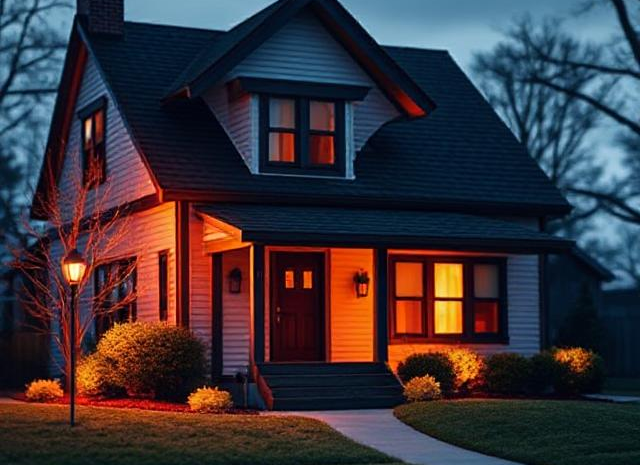
The Impact Of Home Location On Insurance Rates
The location of your home has a significant impact on your home insurance rates. Insurers assess various location-based risks to determine how likely it is that your home will face damage, and this helps set your premium. Here are some of the primary factors that influence how your home’s location affects your insurance costs:
1. Risk of Natural Disasters
- Floods: If your home is located in a flood-prone area, such as near rivers or coastal regions, your insurance rates may be higher, and you may need to purchase additional flood insurance since most standard homeowners policies do not cover flood damage.
- Earthquakes: Homes in earthquake-prone areas (such as those near fault lines) may require special earthquake insurance, and premiums will be higher for these homes.
- Hurricanes and Tornadoes: Living in areas that are prone to hurricanes or tornadoes will likely increase your rates. Coastal homes in hurricane-prone areas or homes in Tornado Alley may face higher premiums due to the risk of significant storm damage.
- Wildfires: Homes in wildfire-prone areas (like the western United States) will also experience higher rates because of the increased risk of property loss or damage due to fires.
2. Crime Rate in the Area
- Homes located in areas with higher crime rates, particularly theft and vandalism, may face higher insurance premiums. Insurance companies consider the likelihood of theft or burglary when calculating rates, so homes in neighborhoods with frequent crime may be charged higher premiums.
- You can sometimes reduce your rates by installing security systems, such as cameras, alarms, or motion sensor lights, which can deter burglars and lower the risk of claims.
3. Proximity to Fire Departments
- Homes located farther away from fire departments or water sources (like hydrants or lakes) are considered higher risk. This is because the longer it takes for a fire department to reach your home, the more likely the fire could cause significant damage.
- In some areas, homeowners insurance rates may be reduced if your home is close to a fire department or has fire suppression systems installed (such as sprinklers).
4. Home’s Proximity to Utilities and Emergency Services
- Similar to fire services, homes located far from utilities (such as gas, water, or electric service) or emergency medical services may see higher premiums. If your home is in a rural or isolated location, the difficulty and cost of accessing these services could make it riskier to insure.
- In some cases, insurance providers may charge higher premiums for homes in remote areas due to the challenge of providing fast response services in the event of a claim.
5. Urban vs. Rural Location
- Urban areas: Homes in urban or densely populated areas may be at higher risk for theft, vandalism, or fire due to the higher concentration of people and structures. However, urban homes may also have better access to emergency services, which can lower premiums in some cases.
- Rural areas: Homes in rural locations can sometimes be more vulnerable to weather-related events (such as floods or tornadoes) or issues like wildfires. Additionally, they may be farther away from emergency services, which can lead to higher premiums. On the other hand, if a rural area is very low-crime, this could help lower insurance rates.
6. Local Building Codes and Construction Materials
- Building codes: Locations with strict building codes (for example, areas with codes to protect homes from earthquakes or hurricanes) may reduce risk and lower premiums. Insurers may reward homes that are built to withstand natural disasters with lower rates.
- Construction materials: Homes built with fire-resistant materials or storm-resistant features (such as brick or concrete homes in hurricane-prone areas) might have lower premiums. The quality and type of materials used in construction can reduce the risk of extensive damage.
7. Real Estate Market and Home Values
- Homes in higher-value areas (such as affluent neighborhoods) tend to have higher insurance premiums, because the cost to rebuild or repair the home would be higher. Insurers base their rates partly on the replacement cost of your home, which is often tied to the home’s market value.
- Conversely, homes in areas where property values are lower may result in lower premiums, as the cost to repair or rebuild is less.
8. Traffic Density and Road Conditions
- If your home is located near high-traffic areas or busy roads, the likelihood of accidents (such as a car crashing into your property) increases. Insurance premiums in these locations may be higher due to the risk of damage from accidents or the difficulty of getting emergency services to the site quickly.
9. Flood Zones and Elevation
- Homes located in designated flood zones are required to have flood insurance if the area is deemed high-risk by the Federal Emergency Management Agency (FEMA). Flood-prone areas usually come with higher premiums, but elevation plays a role. Homes at higher elevations or above floodplain levels might have lower rates for flood insurance.
10. Availability of Discounts
- Certain locations may qualify for special discounts based on factors like being in a fire district or having access to community-based security systems. Ask your insurer about potential savings if you live in a well-protected area.

